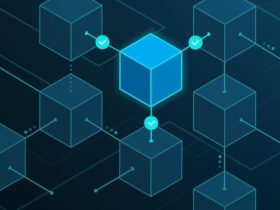An ever-evolving threat landscape, surging investment in security innovation, and a growing emphasis on AI-driven defenses: today’s briefing zeroes in on six developments shaping the cybersecurity sector. From state-level legislation in Massachusetts to invisible AI-powered encryption, from strategic alliances in Canada to urgent warnings in the U.K., and from AI as both attacker and defender to hardware-level resiliency in data centers, these stories underscore three overarching trends:
-
Institutionalizing Cyber-AI Readiness
-
Leveraging AI & Data Partnerships
-
Emerging Threats & Hardware-Driven Defenses
Below, we analyze each development, consider its broader significance, and explore how organizations can adapt and thrive amid accelerating digital risks.
1. Massachusetts Bill Would Codify Cybersecurity & AI Readiness
Source: GovTech
Massachusetts legislators introduced Senate Bill 49 on May 19, 2025, aiming to enshrine the Commonwealth’s cyber-AI strategies into law. Key provisions include mandatory annual cybersecurity training for all public employees, creation of a permanent Cybersecurity Control Board and AI Oversight Commission, and reporting requirements for critical infrastructure operators to the state Fusion Center.
Why It Matters
By transitioning temporary executive orders into binding statutes, Massachusetts is signaling that cyber resilience and AI governance must be institutionalized at the highest levels. This move reflects a broader push nationwide—states like Texas, Colorado, and Oregon have already formed similar oversight bodies—to prepare public sectors for AI-driven attack vectors and to standardize incident response protocols.
Broader Implications
-
Public Sector as Cybersecurity Vanguard: Codification elevates cybersecurity from an operational concern to a policy priority, likely prompting other states to follow suit.
-
AI Governance Frameworks: The Commission on Automated Decision-Making could set precedents for private-sector AI regulation, influencing best practices in transparency and ethical use.
-
Funding for Innovation: The proposed Massachusetts Innovation Fund suggests governments will increasingly rely on revolving loans to modernize IT infrastructure—a potential blueprint for federal initiatives.
2. Invisible Encryption via AI Chatbots
Source: Live Science
On May 15, 2025, researchers unveiled EmbedderLLM, a technique that embeds ciphered messages within AI-generated text, rendering communications invisible to conventional cybersecurity tools. By leveraging LLMs as “digital invisible ink,” EmbedderLLM disguises true messages in benign-looking prose; only holders of the corresponding private key can extract the hidden payload.
Why It Matters
This innovation highlights a dual-use dilemma: while enabling secure channels for journalists and activists under oppressive regimes, it also arms threat actors with stealth encryption methods. The framework’s resilience against quantum decryption advances underscores the urgency for defenders to evolve detection strategies beyond signature-based scanning.
Broader Implications
-
Detection Arms Race: Security vendors must invest in behavioral and semantic analysis to flag anomalous AI-generated content.
-
Policy & Ethics: Regulators should consider guidelines for AI-based cryptography, balancing privacy rights against national security concerns.
-
Quantum-Safe Security: EmbedderLLM’s quantum-resistant properties spotlight the need for quantum-safe standards across the industry.
3. MOBIA & DataBahn.ai Forge Smart Data Management Alliance
Source: GlobeNewswire
On May 21, 2025, MOBIA Technology Innovations announced a strategic partnership with DataBahn.ai to deliver AI-powered data fabric solutions for Canadian organizations. The collaboration promises up to 50% reduction in security data collection costs and 80% in manual effort, automating ingestion, transformation, and orchestration of diverse security telemetry.
Why It Matters
As data volumes explode, security teams struggle with fragmented, siloed information. Smart data fabrics unify and curate disparate sources—network logs, endpoint alerts, identity events—into actionable insights. MOBIA’s integration of DataBahn’s platform illustrates how channel partners can amplify AI-driven cybersecurity for mid-market enterprises.
Broader Implications
-
Channel-Driven Innovation: Partnerships between integrators and AI specialists accelerate adoption of advanced security analytics.
-
Cost-Efficiency Gains: Automation frees analysts from rote tasks, allowing focus on threat hunting and strategic initiatives.
-
Scalable Security Posture: AI-orchestrated data management lays the groundwork for real-time observability and response.
4. House of Lords AI Summit Warns of Relentless Cyber Threats
Source: Business Matters Magazine
At the House of Lords AI Summit on May 20, 2025, U.K. experts from law enforcement, finance, infrastructure, and SMEs convened to warn of “relentless” AI-enabled cyberattacks and a widening digital skills gap. Highlights include:
-
£2.2 billion annual savings via AI-powered anti-money laundering.
-
AI in policing accelerating digital evidence processing (Cellebrite).
-
SME disadvantage, as large enterprises surge ahead in AI experimentation.
Why It Matters
The summit underscored that AI is a double-edged sword: a force multiplier for defenders and attackers alike. The call to close U.K.’s digital skills gap reflects a global talent shortage that threatens to slow AI-security deployments and leaves critical sectors exposed.
Broader Implications
-
Skills & Training Investment: Governments and organizations must expand apprenticeship, reskilling, and public-private training programs.
-
Ethical AI Imperatives: Embedding privacy and bias mitigation into AI governance will be crucial as reliance on automated decision-making grows.
-
Cross-Sector Collaboration: Shared threat intelligence—especially on AI-driven TTPs—can unify defenses across finance, transport, and public safety.
5. Palo Alto Networks CPO: Why Cybersecurity Needs ‘Much More’ AI
Source: CRN
During RSAC 2025, Palo Alto Networks’ CPO Lee Klarich warned that AI-driven attacks are rising at a 300 percent year-over-year rate, with dwell times shrinking dramatically. Palo Alto’s response: Prisma AIRS for AI posture management and Cortex XSIAM 3.0—now extended to advanced email security with intent analysis combining multiple data sources.
Why It Matters
Klarich’s message is clear: human-only defenses cannot keep pace with AI-supercharged threats. By integrating AI at every layer—from model scanning and runtime security to email content analysis—Palo Alto exemplifies the industry’s pivot toward automated, intelligence-driven prevention and response.
Broader Implications
-
Platformization of Security: Consolidating AI capabilities across posture, threat detection, and email ensures cohesive, context-aware defenses.
-
AI-Agent Protection: As enterprises deploy AI agents, securing their memory, identity, and tool use becomes a critical frontier.
-
Strategic Acquisitions: Palo Alto’s planned Protect AI acquisition highlights M&A as a fast track to bolster GenAI and agent security offerings.
6. Dell Unveils AI-Powered Cyber Defenses in Data Center Products
Source: IT Pro
At Dell Technologies World on May 20, 2025, Dell introduced AI-driven ransomware protection for PowerStore and the PowerScale Cybersecurity Suite, plus all-flash enhancements for PowerProtect Data Domain. On-array AI scans detect anomalous deletions and encryptions, enabling near-instant recovery and forensic analysis.
Why It Matters
Embedding AI directly into storage arrays and backup appliances marks a shift from perimeter-centric to data-centric security. The integration with ITSM platforms like ServiceNow underscores how orchestration workflows can automate incident response, minimizing downtime and operational impact.
Broader Implications
-
Data-Resilient Architectures: AI-enabled anomaly detection in hardware adds a critical layer of defense against ransomware proliferation.
-
Energy & Space Efficiency: All-flash appliances with reduced power and rack-space requirements illustrate how performance and sustainability can coexist in cyber-resilience strategies.
-
Vendor Ecosystem Synergies: Collaborations with NVIDIA, AMD, and Intel on AI Factories hint at future co-developed security accelerators.
Conclusion & Actionable Insights
These six stories reveal a cybersecurity ecosystem at a crucible: government mandates, AI-powered cryptography, strategic partnerships, skills shortages, AI-driven defensive platforms, and hardware-level resilience are all converging.
To stay ahead:
-
Institutionalize & Fund Readiness: Advocate for codified cyber-AI policies and secure dedicated innovation funds.
-
Embrace AI-First Security: Integrate AI across detection, response, and infrastructure layers—partner with specialized vendors and channel integrators.
-
Strengthen Talent Pipelines: Invest in upskilling, cross-sector apprenticeships, and public-private skills initiatives.
-
Innovate Partnerships: Leverage strategic alliances (like MOBIA + DataBahn) to automate data-centric security at scale.
-
Prepare for Dual-Use AI Threats: Develop semantic threat analytics to detect AI-embedded malicious content and encryptions.
-
Embed Security into Hardware: Push for AI-driven resiliency in storage and backup appliances to thwart ransomware and ensure rapid recovery.
As cyber threats escalate and AI reshapes both offense and defense, a proactive, multi-pronged strategy—blending policy, technology, partnerships, and talent—will define the next frontier of digital security.














Got a Questions?
Find us on Socials or Contact us and we’ll get back to you as soon as possible.